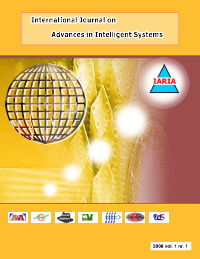

 |
The Eighth International Conference on Advanced Geographic Information Systems, Applications, and Services GEOProcessing 2016 |
|
|||||||||||||||
| Details: |
ISSN: 2308-393X |
conference contact: mp@iaria.org |
||||||||||||||||||
All tracks/topics are open to both research and industry contributions.
Tracks:
Geo-spatial fundamentals
Fundamentals of geo-information; New trends in GIS technologies and research; Techniques for geographical representation; Integrated architectures for geo-spatial information; Geo-spatial data in net-centric environment; Geo-spatial technology; Discovery, indexing and integration of geographical information systems; Geo-processing of distributed data; Geo-information processing; Use of computational geometry for GIS problems; Virtual globes and their application to scientific research; Spatial decision support systems
Geo-spatial Web Services
Geo-spatial Web Services and applications; Geo-spatial Web Services and simulation and modeling; Geo-spatial Web Services and sensors; Geo-spatial Web Services and interoperability; Geo-spatial Web Services and processing; Geo-spatial Web Servcies and spatial analysis; Geo-spatial Web Services and society; Geo-spatial Web Services and information retrieval; Geo-spatial Web Services and human computer interaction; Geo-spatial Web Services and mobility
GIS
Wireless and mobile GIS; Integration of remote sensing, GIS and GPS; Statistics and application models of spatial data; GIS for the environment and health; Satellite positioning technology and LBS; Urban GIS and its applications; Theories and algorithms in GIS; Government and public GIS
Geo-spatial simulation and visualization
2D and 3D information visualization; Distributed simulations and sensor webs; Simulation modeling dynamic geo processes; Exploratory spatial data analysis; Fine-grained, terrestrial monitoring platforms; Geo-visualization and geo-visual analytics; Visualization of geospatial uncertainty; Representation and visualization of geospatial data
Geo-modeling
Standards and geo-spatial metadata; Novel geo-spatial data processing and management mechanisms; Spatio-temporal data modeling and reasoning; 3D modeling and GIS; Modeling and analysis of terrains; Modeling uncertainty in geo-spatial information; Spatial and spatio-temporal statistics; Geo-spatial and spatio-temporal data mining; Virtual modeling of large geographic areas; Time-geography modeling; Geospatial data analytics
Digital cartography data
Digital geographical libraries; Exploratory cartography and interfaces; Digital cartography; Automated mapping and map generalization; Cartographic theory and applications; Data models in cartography; Geographical search engines
Earth Geo-observation
Climate change and the global environment; Data systems for the future Earth observation satellites; Calibration and validation of remotely sensed data; Earth observation sensor networks and applications; Earth observation technology and systems
Geo-sensing
Acquisition and processing of remotely sensed data; Information extraction from remotely sensed data; Data mining across sensor; Intelligent sensors/sensor fusion; Co-operative sensing and organization; Sensor information management systems; Spatio-temporal sensor data mining; Sensor networks and interaction with actuators; Geo-sensor specialized networks (e.g. disaster management, early warning systems, environmental monitoring)
Specific geo-data processing
Seismic data processing (stacking, migration, post-processing, interpretation); Tomography (algorithms, methods); Electromagnetic sounding; Near surface methods (archaeology, urban and environmental planning); Combined geophysical methods (gravimetry, magnetics, borehole methods); Seismology and planetology; Geo-natural data on phenomena (hurricane, winds, flooding, etc.); Underground geo-reserves, natural resources, exploration (gas, oil, metals, etc.); Natural geo-evolution and morphology (glaciers, oceanic streams, etc.); Geo-marine life; Geology and earth system simulation and modelling
Geo-spatial domain applications
Geospatial Technologies for Disaster Management;Geology and hydrogeology geographical data; Standardization of geodata and geoservices; Environment and land surveying; Oceanographic geo-information; Natural resource information systems; Remote sensing geospatial data collection; Geo-spatial data and vehicular technologies; Geology and Hydrology applications; Location-based services; Environmental monitoring; Special applications: 3D cadastre, traffic management, etc.
Managing geo-spatial data
Managing uncertainty in spatial information; Automatic mapping (possibly web-based ...); Digital elevation/shape modeling; Web-based visualization of statistical data within a geographic framework; Tools and links between GIS and statistical software packages; Business mapping (spatial analysis for business processes as customer segmentation, churn analysis, etc.); Wireless sensor networks for spatial applications; Errors and their measurement in spatial data


